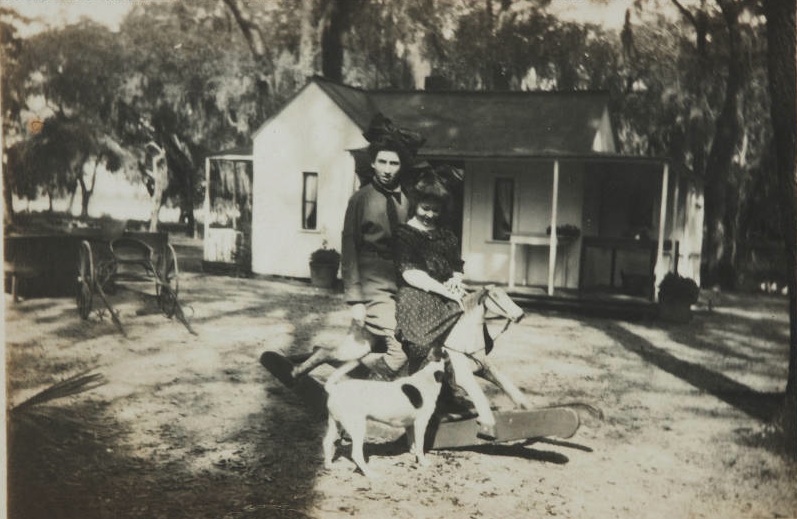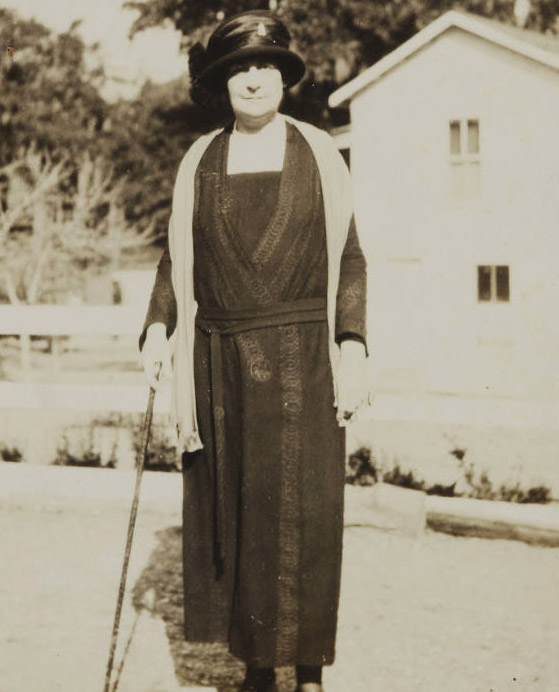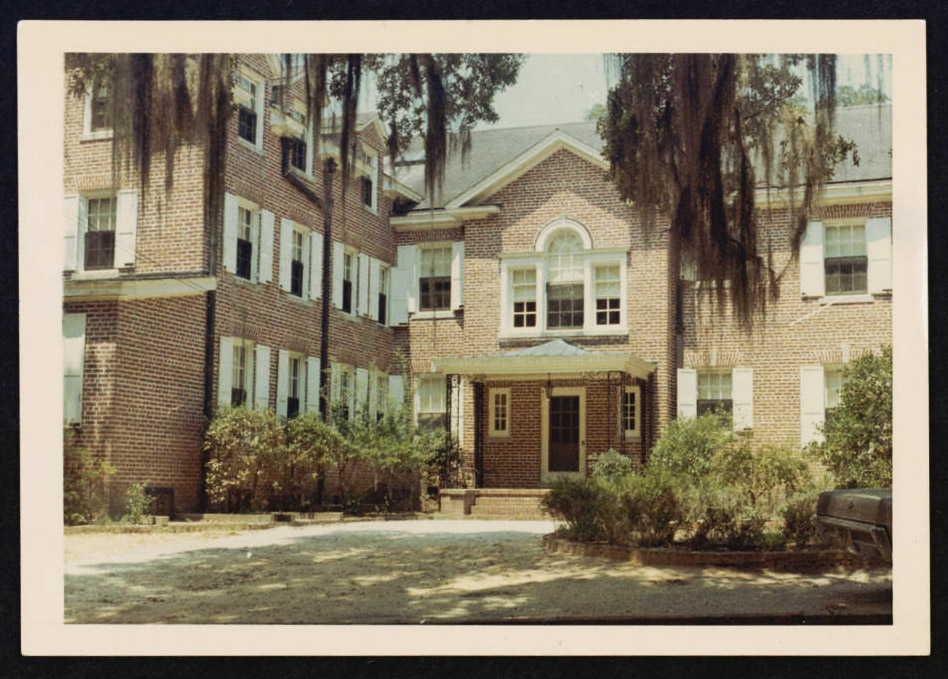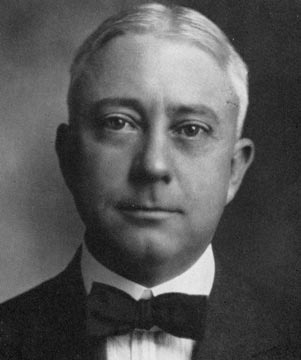
Set in the woods behind Hobcaw House is the Baruch girls’ playhouse, built for Belle around 1905 and enlarged in 1913 to make room for her sister, Renee. The dollhouse, as it was known, has a livingroom, diningroom and a kitchen with a wood stove, where the girls sometimes cooked meals for the family.
When the Baruchs were at Hobcaw the dollhouse also had a set of Limoges china and running water, an amenity that was never provided to the African-American residents of Hobcaw’s four villages. In the video below, Minnie Kennedy, who grew up at Hobcaw, discusses this glaring disparity.

Directly behind Hobcaw House on the right as one enters the property from the road are three small buildings and a gas pump. In this c. 1925 photograph Annie Baruch stands in front of the generator house, situated furthest from Hobcaw House. Located here was a diesel-fueled generator, the only source of electricity on the entire plantation until 1947, when it became a back-up for electrical lines installed by the power company. The head superintendent had an apartment on the second floor. Next to this building is a gas pump that has been restored to maintain period appeal. On the other side of the generator house are the pumphouse and the laundry.

At the rear of Hobcaw House are two entrances. The door in the middle of the building leads to the reception hall and is conveniently located close to the coat and gun room. Returning from hunting, guests and family members could shed their muddy clothes and shoes and hang up their guns before moving into the rest of the house.The door to the left leads into the service wing of Hobcaw House and is where the servants entered. The service wing has seven bedrooms, pantries and the servants’ dining room.

Baruch was reluctant to rebuild after the Old Relick burned but was swayed by the entreaties of his family. For the architectural design of the new house he turned to the firm of LaFaye and LaFaye, based in Columbia, South Carolina. The brothers George E. LaFaye, pictured here, and Robert, designed private homes as well as public buildings, including Tapp’s Department Store and the Wade Hampton State Office Building in Columbia, and the U.S. Courthouse in Aiken, South Carolina.
Baruch was determined that the new house be fireproof, so the experience of the LaFaye firm in institutional and commercial design may have appealed to him. According to the National Register of Historic Places, Hobcaw House “is a very good example of a hunting plantation’s main house with the related features that provide a comfortable resort in an isolated rural setting.” National Register of Historic Places Registration Form, 1994
